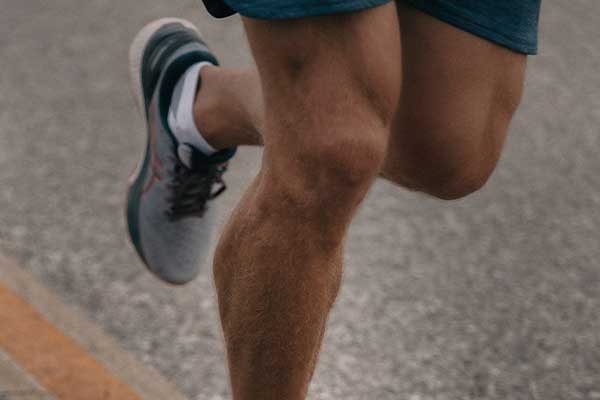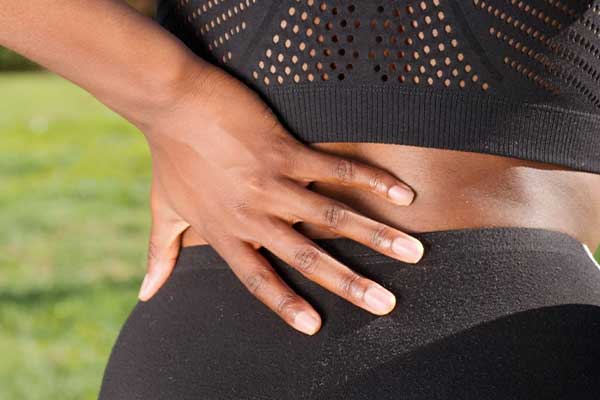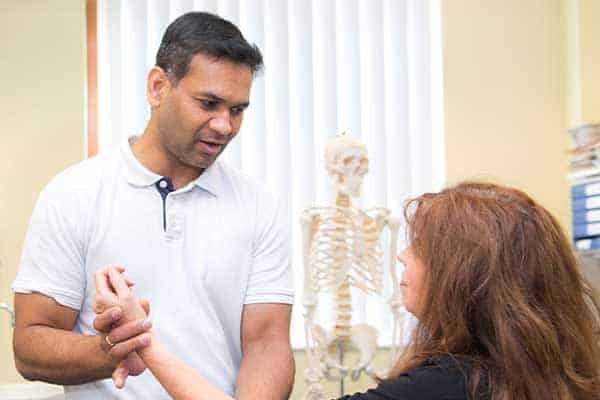Hamstring muscle injuries are strains or tears to the large muscles at the back of your thigh. These can range from mild overstretching to complete rupture.
The hamstrings are a group of three muscles, running down from the buttock area to just above the knee. They play a key part in the function of your leg by bending the knee, extending the hip to move your leg behind you, and helping with knee stability.
The term hamstrings can also refer to the tendons that attach these muscles to the bone.
What causes hamstring muscle injuries?
Hamstring muscle injuries normally occur during sports.
The two most likely causes are a change of speed during running or overstretching, such as when trying to reach a ball.
You may also be more likely to injure your hamstrings if you have injured them before.
What are the symptoms of hamstring muscle injuries?
Typical symptoms include:
- A sharp, sudden pain that is localised in the back of your leg.
- Pain experienced when walking, particularly when walking fast or jogging.
- Pain when bending forward in a standing position, or when stretching your leg to put on socks and shoes.
- Pain when bending your knee.
Depending on the severity of the injury, you may also see:
- Swelling and bruising at the back of your thigh.
- Abnormal appearance of the hamstrings.
How are hamstring muscle injuries diagnosed?
There are different grades of hamstring muscle injury.
- Grade 1: A mild muscle pull or strain causing pain and tenderness but no loss of muscle strength.
- Grade 2: A partial muscle tear, which might cause swelling and bruising as well as some loss of strength.
- Grade 3: A ‘complete’ muscle tear/rupture, with over 50% of muscle fibres torn. This will usually be very painful, tender, swollen and bruised, and you will be unable to use your leg.
There is normally no need to seek an assessment from your GP unless you are concerned that you have a severe injury (Grade 3), or if your symptoms do not improve.
What are the treatment options for hamstring muscle injuries?
Depending on the severity of your injury, it may be advisable to start moving and strengthening your muscles again, as soon as possible, or to avoid putting any weight on your injured leg (for Grade 3 injuries, your GP may recommend using crutches).
In either case, it is important to manage pain and swelling during the first few days.
Put an ice pack on the hamstring area for 10-20 minutes, every 2-3 hours, to relieve pain. (Do not put ice directly next to skin as it may cause ice burn. Wrap it in a damp tea towel. Also, do not lie on the ice. Remove the pack if irritation increases. Allow the area to return to normal temperature before reapplying the ice.)
Compress your thigh with a tubular bandage or neoprene support. This can help to relieve pain and reduce swelling. This support should only be worn during the day and removed when you go to bed.
As often as possible, use pillows or cushions to elevate your leg above the level of your heart. This can also help to relieve pain and reduce swelling.
You could try anti-inflammatory painkillers such as Ibuprofen. Some anti-inflammatory painkillers also come as creams or gels, which you can rub over your hamstring area. These tend to produce fewer side effects than those taken by mouth. If you cannot take anti-inflammatory painkillers, other painkillers such as paracetamol, with or without codeine added, may be helpful. Ask your doctor or pharmacist for advice.
Once the pain and swelling start to improve, you should consider exercises to help your muscles regain their strength. These should be light to start with, such as walking and simple movement exercises, gradually progressing to weight-bearing and strengthening exercises (depending on the severity of your injury).
Your doctor can offer advice or refer you for physiotherapy or other manual therapies.
In rare cases, if your injury has been particularly severe, surgery may be necessary.
What is the prognosis (outlook) for hamstring muscle injuries?
Recovering from a hamstring muscle injury may take days, weeks or months, depending on how severe it is and how effective your rehabilitation regime.
A completely torn hamstring may take several months to heal and you will be unable to resume training or to play sport during this time.
How can I prevent recurrence of hamstring muscle injuries?
It is important not to overdo your recovery exercises or to return to sports too early.
However, it is also unwise to avoid exercise, as this can cause your hamstring muscles to tighten or scar while they are healing, which may lead to further problems.
Performing regular stretching and strengthening exercises could help avoid future episodes of hamstring muscle injury. So can warming up properly before exercise.
Recommended exercises (click to expand):
Supine knee flexion
- Lie on your back with your legs straight out in front of you.
- Gently bend your injured leg, sliding the heel towards your buttocks and keeping the knee pointed directly upwards.
- Bend the knee as far as you comfortably can.
- Slowly straighten the knee back down to the starting position, and repeat.
Standing knee flexion
- Stand up straight facing a wall and place your hands lightly against the wall for balance.
- Take your weight onto your uninjured leg, keeping your thighs parallel.
- Bend your other knee, bringing the heel of this foot up towards your buttock.
- Carefully lower your leg back down and repeat with the same leg.
Bridge
- Lie on your back with your knees bent and feet flat on the floor.
- Keep your knees and your feet apart – about the width of your hips.
- Tighten your buttock muscles.
- Lift your hips towards the ceiling, until there is a straight line from your shoulders to your knees.
- Hold this position.
- Control the movement as you carefully lower your hips back down to the floor.
- Repeat.
Walking lunges
- Stand up straight with your feet about a shoulder-width apart.
- Take a large step forwards with your right leg.
- As you lunge, bend your right knee, lowering down so your right thigh is parallel to the floor, your left thigh is vertical and both knees are at 90 degrees.
- Your right knee should be directly above your ankle and pointing forwards.
- Pause.
- Push up, stepping forward with your left foot and repeating the same lunging movement with your left leg.
- Pause again and repeat, walking forward all the time in a straight line.

How to get referred
Find out how to get referred to Practice Plus Group MSK & Diagnostics for NHS treatment.




